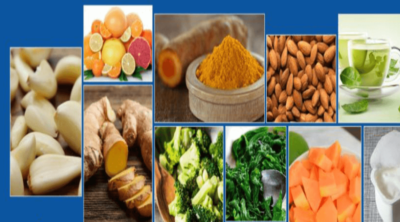
Torula yeast is usually added in its inactive form to make otherwise boring food taste like heaven! In this NutriNeat article, we give you everything you need to know about Torula yeast.
The Name Remains
Earlier Torula was called Torula utilis until researchers figured out that the yeast species belonged to genus Candida after the species underwent several rounds of scientific classifications. However, in spite of that, the name Torula probably seems to have remained intact.
The use of yeast in brewing foods has been around for centuries. The Egyptian civilization has been using yeast in the production of ale since 4000 BCE. In modern days, it is used in the production of a large number of food products due to its fermentation capability. Yeast is a unicellular fungus. There are many species of yeast that are presently used in the production of food like Saccharomyces uvarum, Candida utilis, Saccharomyces cerevisiae, Saccharomyces fragilis, etc. It is used in the production of beer and wine as well as in leavening or raising of bread. Apart from this, yeast can be used as dietary supplement and is referred to as nutritional yeast.
Yeast is grown on a suitable medium to a certain point and then is killed by dry heat. It is a rich source of proteins and vitamins, especially vitamin B complex. It is low in fat and sodium; it also free of dairy and gluten. One of the species of yeasts to have gained recent popularity is the Torula yeast, and the following sections given you an overview of it.
TORULA YEAST
Torula yeast is from a species of yeast called Candida utilis (formerly known as Torula utilis). The use of Torula yeast as food started during and following World War II. This yeast is grown on wood liquor, usually a byproduct of the paper industry, and it is a rich source of xylose (type of carbohydrate). After this, it is pasteurized to deactivate the organism and is then spray-dried. This processed Torula yeast is a fine and brownish-colored powder with a slight yeasty smell.
Torula Yeast in Food
- Torula yeast contains more than 50% proteins out of its dry weight. Deactivated Torula yeast contains a large amount of free glutamate because deactivation of yeast cells degrades its outer cell wall to some extent.
- It is also rich in vitamin B complex, chromium, selenium, and other amino acids like lysine and threonine.
- It has an umami flavor, and is used as a substitute for meat in various food products. It used as a flavor enhancer in most ready-to-eat and instant foods.
- It is also added to various pet foods owing to its meaty taste.
- It is the main flavoring agent in certain vegan foods to mimic the flavor of meat. It can also be added to gravies or sauces at home to render a little oomph to them!
- These days, many food manufacturers have started using this yeast in place of monosodium glutamate (MSG) as it enhances the flavor of food products and is completely natural.
Applications
Torula yeast has been used as a feed in aquaculture, when mixed with fish meal or bone meal. It increases the weight of the fish and the survival rate of larvae. It is given as a nutritional supplement along with pollen grains to honeybees in order to obtain honey of a better quality. Along with some other ingredients, it is used as a substitute for pollen.
Torula yeast is used in the organic control of olive flies. It is either mixed with pheromones or given alone, and is used to lure flies in certain special types of traps.
Torula Yeast Allergy
As it is grown on a medium that solely contains wood liquor, this yeast is completely free of gluten and dairy, therefore, making it safe for consumption by individuals suffering from lactose intolerance and celiac disease.
However, individuals who are allergic to MSG show an allergic reaction to this too. The allergic reactions may manifest themselves in mild cases such as headache, hives, swelling of the face and tongue, and rhinitis. In severe cases, it may lead to chest pain, shortness of breath, swelling of the throat, and anaphylactic shock. This type of reaction ideally appears within two hours of consumption of food containing this yeast. As it is grown on a medium containing sulfite, individuals sensitive to it may develop an allergic reaction to Torula yeast.
Nutritional Info
| TORULA YEAST | |
| Nutrition Per 1 tablespoon (10 g) | |
| Calories | 35 |
| Fat | 0.5 g |
| Cholesterol | 0 mg |
| Calcium | 8% |
| Iron | 16% |
| Sodium | 20 mg |
| Thiamine B1 | 6% |
| Riboflavin | 48% |
| Carbohydrates | 2.8 g |
| Fiber | 3.2 g |
| Protein | 5.1 g |
* % values indicate Recommended Dietary Allowance
Source: Novae nutrition
Due to its high protein content and the presence of certain important amino acids that cannot be produced in our body, Torula yeast is an ideal dietary supplement that may provide for vegans, vegetarians, and individuals on a restricted diet with adequate nutrition.

